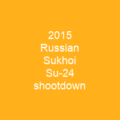Understanding the Complex Web of Actors in Syria’s Civil War
The Syrian civil war (2011–present) is a labyrinth of conflicting interests, alliances, and ideologies that have shaped the region’s fate. From the Syrian Arab Republic to various armed groups, each player brings its unique agenda to the table.
State Actors: The Syrian Armed Forces
The Syrian Armed Forces, comprising the Syrian Arab Army, naval forces, air forces, and air defense forces, have been a central force in the conflict. With an estimated 169,000 active troops as of 2024, these ground troops are predominantly made up of Sunnis, but loyal elite units and Alawite militias like the Shabiha play crucial roles.
The National Defense Forces (NDF), formed out of pro-government militias in 2013, act as infantry fighters. They number around 50,000 troops as of 2024 and receive logistical support from the Syrian army. The Shabiha, unofficial pro-government militias drawn largely from Syria’s Alawite minority group, have been blamed for violent excesses against anti-government protesters.
Foreign Support: Hezbollah and Iran
Hezbollah, an Iran-backed Shia armed group based in Lebanon, has played a significant role since 2013. President Bashar al-Assad initially denied foreign fighters were fighting for him until May 2013 when Hezbollah publicly collaborated with the Syrian Army.
By 2014, approximately 500 Hezbollah fighters had died in Syria, and the number of Iranian troops is estimated to be around 1,500. Iran has provided financial, technical, and military support since the civil uprising phase, with an estimated 10,000 operatives in December 2013 but later reports saying ‘at most hundreds.’
Lebanese Hezbollah fighters backed by Tehran have taken direct combat roles since 2012. Russia launched a military intervention on September 30, 2015, to support the Assad government against opposition and IS. By 2024, it is estimated that around 4,000 Russian troops remain in Syria.
The Syrian Opposition: A Divided Front
The Syrian National Council (SNC), formed on August 23, 2011, and the Syrian National Coalition (SNC), recognized by many Arab states and Western countries in November 2012, have been key players. Their main aim is to replace Assad’s government, dismantle security services, unify the Free Syrian Army, refuse dialogue with Assad, and hold accountable those responsible for killing Syrians.
The Interim Government (SIG), formed in 2013, aimed to rule liberated territories but faced challenges due to internal rivalries. The Free Syrian Army (FSA), formed by defecting officers in July 2011 and receiving support from regional states and the US, has since fragmented into various factions.
In 2016, Turkey assembled a new coalition of Syrian rebel groups known as the Turkish-backed Free Syrian Army (TFSA), which eventually became the Syrian National Army (SNA) in 2017. The SNA controls areas along the Syrian-Turkish border and has fought against other groups including IS and the Baathist government’s Syrian Arab Army.
Other Armed Groups: Al-Qaeda Affiliates, Islamic State, and Kurdish Forces
The Islamic State (IS), also known as Dā’ash or ISIL/ISIS, made rapid military gains starting in 2013. It strives to establish a global caliphate and imposes strict Sharia law. IS was originally affiliated with al-Qaeda but severed ties in early 2014.
Other groups include the National Coordination Committee for Democratic Change (NCC), which formed in 2011 as an opposition bloc, and Hurras al-Din, a Salafi Jihadist group formed in 2018. The Autonomous Administration of North and East Syria (AANES), also known as Rojava, is a de facto autonomous region led by the Syrian Democratic Council.
The Syrian Democratic Forces (SDF) are an alliance of mainly Kurdish but also Arab, Syriac-Assyrian, and Turkmen militias. They oppose the Assad government but have focused on fighting Al-Nusra Front and IS. Conflicts between rebel groups and within the opposition occur regularly.
The Future of Syria: A Complex Path Forward
As the Syrian civil war continues to evolve, it is clear that no single solution can address the myriad issues at play. The future of Syria will depend on how these various actors navigate their complex relationships and interests. Will they find a way to reconcile or will the conflict continue to tear the country apart?

The path forward for Syria is fraught with challenges, but it is not without hope. The key lies in understanding and addressing the underlying causes of the conflict while fostering dialogue among all parties involved.
You want to know more about List of armed factions in the Syrian Civil War?
This page is based on the article List of armed factions in the Syrian Civil War published in Wikipedia (retrieved on November 29, 2024) and was automatically summarized using artificial intelligence.






